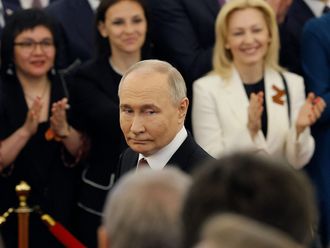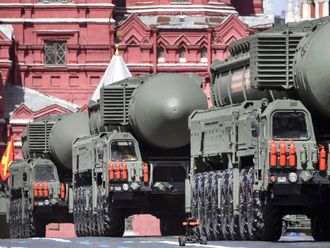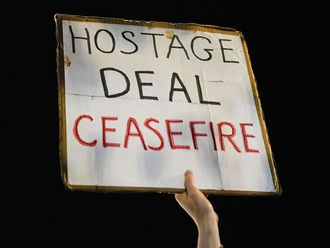London: Prime Minister Theresa May will urge her Conservative Party on Monday to show unity when parliament votes on changes to her Brexit blueprint, a potential showdown that could reshape her approach to Britain’s departure from the EU.
Lawmakers will vote on Tuesday and Wednesday this week on amendments to the EU withdrawal bill, legislation to sever ties with the bloc by essentially copying and pasting the bloc’s laws so that Britain’s legal system can function after March.
Her government is most vulnerable over an amendment, introduced by the upper house of parliament, to change the so-called “meaningful vote” on any final Brexit deal by handing the lower house more power to set the “direction” of the government if it rejects the agreement.
She will also be tested by rebels in her own party over her commitment to leave the EU’s single market and customs union, which will transform Britain’s future trading relationship for many years to come.
May is expected to address a meeting of Conservative members called the 1922 Committee later on Monday and will repeat her stance that the EU withdrawal bill is purely technical “to ensure a smooth and orderly transition as we leave”.
“The message we send to the country through our votes this week is important. We must be clear that we are united as a party in our determination to deliver on the decision made by the British people,” she is expected to say.
“They want us to deliver on Brexit and build a brighter future for Britain as we take back control of our money, our laws and our borders.” It was a message reinforced by her spokesman, who described the bill as “a vital piece of legislation for ensuring our statute book is ready for Brexit day and for delivering the smoothest possible exit from the European Union”.
Divisions
The House of Lords defeated the government 15 times in earlier votes, offering parliament the chance to put pressure on May and her government to change tack on Brexit.
May is struggling to unite not only her party but her top team of ministers over how to leave the EU, particularly over the future customs arrangements which have pitted those wanting closer ties with the EU against others who demand a clean break.
She got backing over the weekend from two Conservative lawmakers from either side of the debate. Amber Rudd, a former pro-EU campaigner and interior minister, and Iain Duncan Smith, a leading eurosceptic, joined forces to urge members to “march in lockstep behind the prime minister”.
But with only 10 months left before Britain is due to leave, her government is under pressure from EU negotiators, businesses wanting clarity, and from many in the country to start taking decisions on its preferred future trading ties.
May’s decision to leave the customs union, which sets tariffs for goods imported into the EU, has also been criticised for raising the prospect of a “hard” border on the island of Ireland, which some fear could reignite sectarian violence.
She was forced into crisis meetings with her pro-Brexit ministers last week over fall back measures that would ensure no return to a hard border between the British province of Northern Ireland and the Republic of Ireland, which is in the EU.
But even the compromise with her ministers did little to win over the EU, with its chief negotiator saying on Friday that the proposal “raises more questions than answers”.
The government is trying to overturn 14 amendments from the House of Lords, after accepting one which May’s spokesman said “essentially states government policy in relation to the fact that we could have future engagement with some EU agencies”.
Ministers may also swallow a defeat on the customs union because of the vague wording which only requires ministers to report what efforts they had made to secure a customs union by the end of October. The spokesman said: “In relation to the ... 14 amendments, we will be looking to either overturn those or to amend them.”












